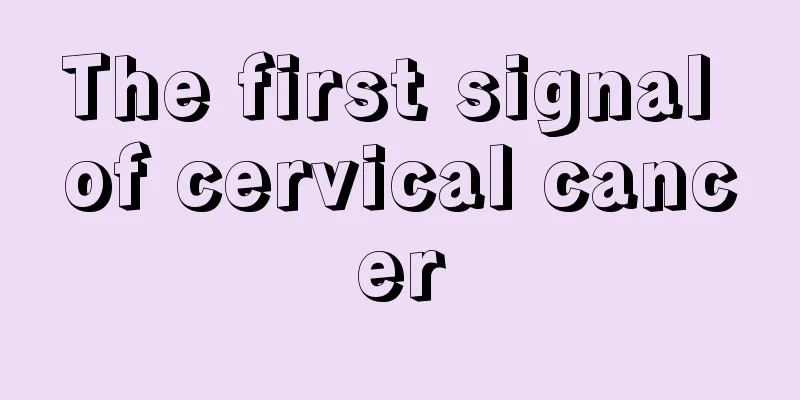The first signal of cervical cancer

|
The first sign of cervical cancer is usually contact bleeding, which may appear as blood in the leucorrhea or irregular vaginal bleeding. These symptoms often appear in the early stages, but they are not specific, so they need to be taken seriously. 1. Contact bleeding: This is an early warning sign of cervical cancer. It may occur after intercourse or during a gynecological examination. Although this bleeding does not necessarily mean cancer, if it occurs frequently, it is recommended to see a doctor as soon as possible. 2. Abnormal vaginal discharge: Blood in vaginal discharge is another symptom to watch out for. It may be bright red or brown, often accompanied by an odor or color change. Although abnormal vaginal discharge can also be caused by infection or other factors, it is especially alarming when combined with bleeding symptoms. 3. Irregular vaginal bleeding: In addition to contact bleeding, cervical cancer may also cause irregular vaginal bleeding outside of the menstrual cycle. This bleeding may be mild or more severe. If this happens, especially after menopause, be sure to consult 4. Importance of regular screening: Early symptoms of cervical cancer are not obvious, and regular cervical cancer screening (such as cervical smear examination) is an effective way to detect problems. Screening can help detect abnormal cell changes early and intervene in time. 5. Lifestyle adjustments: Maintaining a healthy lifestyle is also important for preventing cervical cancer. Quitting smoking, maintaining a healthy weight, eating a balanced diet, and exercising regularly can all help reduce the risk. HPV vaccination can also effectively prevent most cervical cancers. 6. Psychological support and health education: Risk factors and preventive measures for cervical cancer require extensive health education. Understanding the symptoms and risk factors of cervical cancer can help with early identification and medical treatment. At the same time, psychological support is also very important for confirmed patients and their families to help them cope with the psychological pressure brought by the disease. 7. Medical advice: If any of the above symptoms occur, it is recommended to seek medical attention for professional evaluation as soon as possible. Early diagnosis and treatment are the key to improving the cure rate of cervical cancer. Although the early signs of cervical cancer are not specific, regular screening and paying attention to physical changes can greatly increase the probability of early detection. Maintaining a healthy lifestyle and regular physical examinations are important measures to prevent cervical cancer. I hope everyone can pay attention to these signs and take timely actions to protect their own health. |
<<: How long can a person with lymphoma usually live
>>: What are the treatments for glioma
Recommend
Summary of complications of ovarian cancer
The age of onset of ovarian cancer is not stable,...
How to remove tape residue
Tape really provides a lot of convenience in our ...
What should I do if my left ear is filled with water and I can't hear anything?
What should I do if water gets into my ears and I...
What should I do if I want to take care of my breasts? 5 ways to stay away from breast cancer
At 16:55 on January 16, 2015, the famous young si...
Abiraterone can prolong the survival of patients with metastatic prostate cancer
Abiraterone may prolong survival in patients with...
Can I wear a belly-controlling garment during confinement?
Postpartum women have a common worry, which is th...
Where can I get accurate pathological examination of endometrial cancer?
Endometrial cancer has a great impact, but patien...
How long after eating can you go to sleep
There are many things you cannot do after eating,...
What are the symptoms of insufficient gastric motility
Insufficient gastric motility has occurred in man...
What to do if you have teratoma in late pregnancy
Teratoma is a type of ovarian tumor, which is div...
What are the differences between esophageal cancer and laryngeal cancer
What is the difference between laryngeal cancer a...
What are the symptoms of keratitis
Keratitis is a common inflammation in clinical pr...
What is the fastest way to slim your chin?
Female friends all hope to have a small face, but...
What to do if pimples appear on the neck
No matter where the pimples appear, it is very an...
Can bad breath be passed on to children?
Bad breath is not hereditary, so parents don’t ha...









